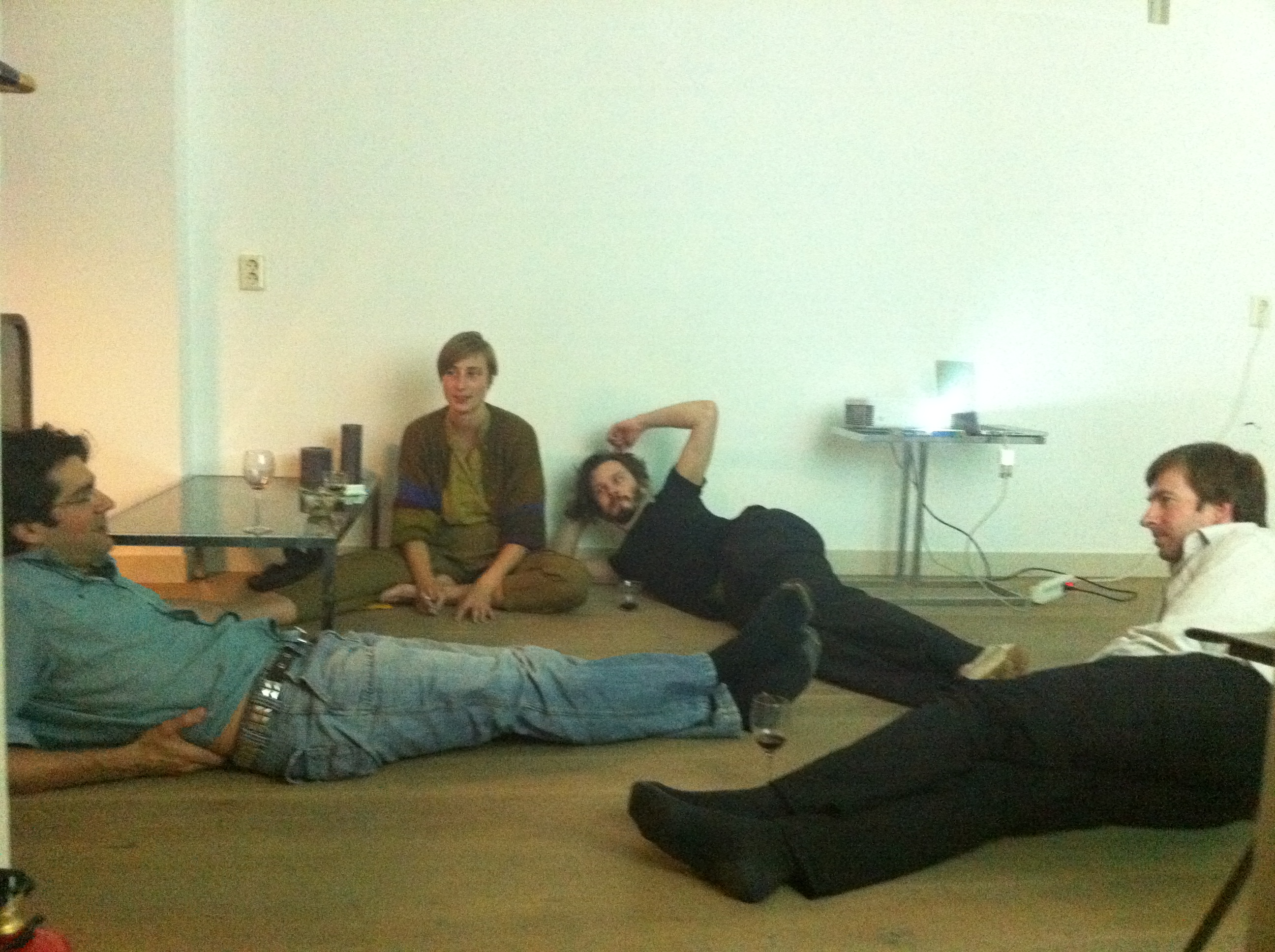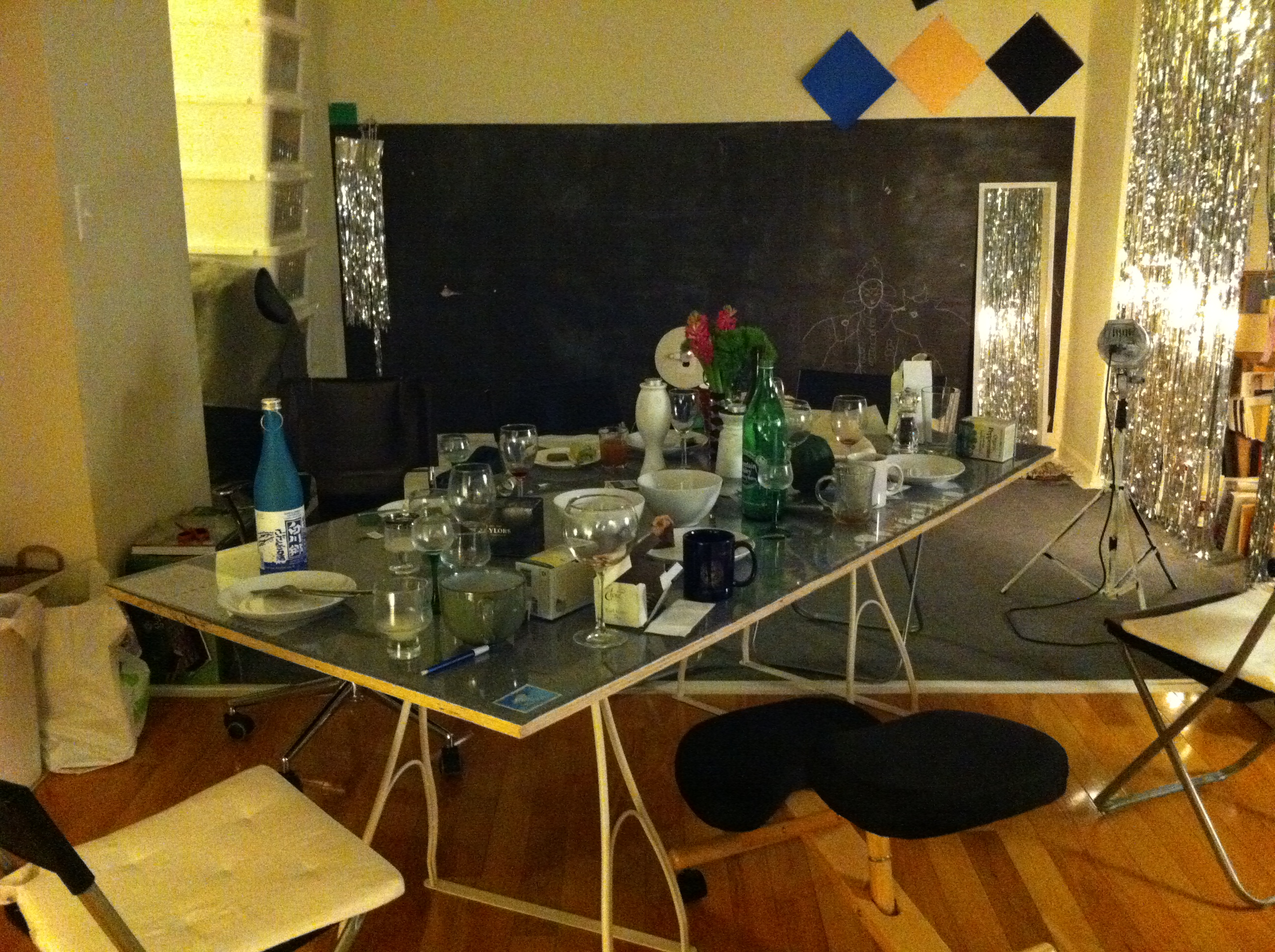

Artist's Notes on lectures New York / June 2008.
Lectures
I notice that dinner invitations are scarcer in New York City around my age group of artists and the like because small private spaces or their business drive people into restaurants and events in New York. Amsterdam is considered dense in Europe, but it still had space for a community. The Rijksakademie, for instance, was an interesting place in which friendship formed naturally. I had a small group of artists, who frequented my house for dinners and talks. Then I shared my living with an artist, Nina Yuen, and a musician, David Michael DiGregorio. Three’s company was inviting for others to come in to join the community. Other artists such as Narda Alvarado (her first lecture was on swimming) or Jewyo Rhii (on the image of a dead friend) were frequent visitors for these lectures. Very often after dinners, we did this thing called lectures.
Everyone at the dinner was given a paper, writing tools, video, musical instruments and what not, and had to go find a corner to think, and prepare for about 15 minutes. And then everyone gave a presentation that lasts around 3-5 minutes. It could be on any subject and in any form. The rules were: 1. we do not do lectures unless every one at the table does one. 2. your lecture cannot be longer than its preparation. 3. you need to actually prepare during preparation. 4. you do not comment or question right after each performance (we applauded and moved on to the next one).
They were interesting, touching, beautiful, and funny. There were laughter and tears. Some of my best moments happened during these lectures in Amsterdam.
Origin of Lectures
The idea was that you think more about what you say, while giving thoughts to the form of presentation, but in a very casual manner. It was an ordering of intuition.
This was an interesting format because every one is a performer and audience at the same time. Understanding the task of performing can open up different channels for the audience. Once I listen to others, knowing that I will also do it, I listen to them from the perspectives of the doer. This was why it was important that the lectures were not done unless everyone did one.
On a few occasions, we were unable to do lectures because some people (often the new people at the dinners) found this form dogmatic and forced. I think a seemingly-free dinner conversation consists of a few people who always talk more; and those who lead the subject. And then there is always the silent person.
In lectures, a speech is not cut off by another person’s thought immediately. Some thoughts only develop in paragraphs, essays, or even a stutter. Some wrong sentences are only pretexts that are supposed to reveal some other messages later on. These sentences do not need to get refuted by the people who have different opinions after hearing one or two sentences, as it happens in usual conversations and debates. I liked the idea of giving a platform for a speech, where a note does not end in a syllable.
Lectures—not a performance
Maybe lectures was somewhere between performances and daily life. It touched upon the area that is impossible in many public performances such as the breakage between performance-givers and performance-receivers. If there were four persons in the lecture (A, B, C, D), then lectures had a format that was (A-BCD, B-ACD, C-ABD, D-ABC).
I was asked once by Binna Choi (current director of Casco, Utrecht) to do lectures at BAK, but I did not do it because the same format would not work in an institutional setting. Lectures was usually done among four to seven people. In an institutional setting, however, there is very little control over how many people are allowed in a public event. It would be boring to listen to fifteen little stories in a museum. And who would convince them to participate? The energy of form can easily dissipate if it is done with too many people who do not know each other. Lectures was not about contacting strangers, but rather about contacting the familiars in a strange way. People involved in lectures were either the ones you already knew, or ones you were just introduced to, which meant that part of lectures depended on intimacy, or at least, a hope for intimacy. I was told that Jack Smith used to pass his joint around to the audience in his performances, and I did like this image, and what this might have meant for his performances. This gesture also inspired me to have a communication in which a device is used to shift the relationship between the people in a room. There was a strengthening of relationships between the people involved in lectures because it happened inside a personal setting, my house.
In the end, we always wanted to do it because it was fun.

